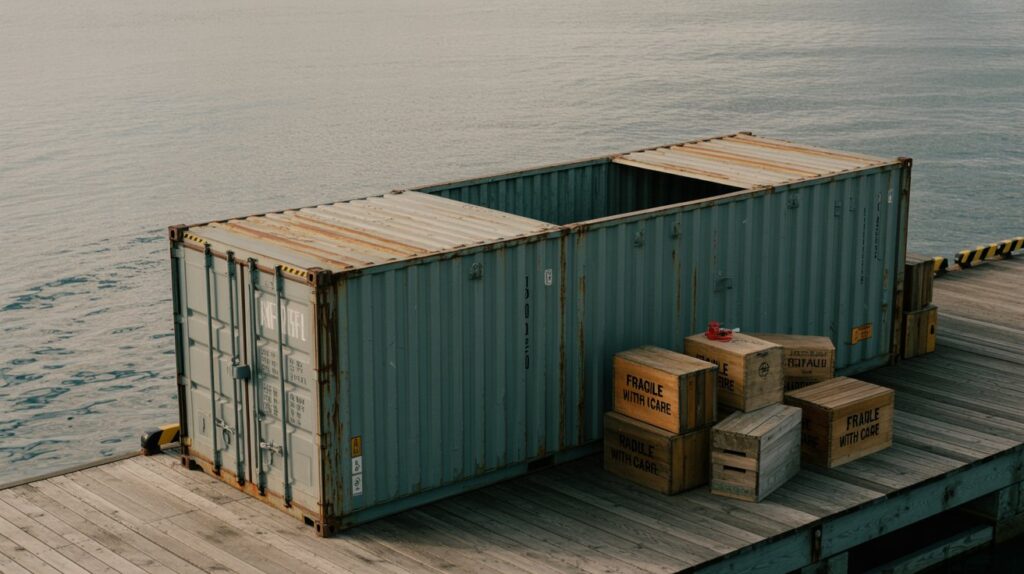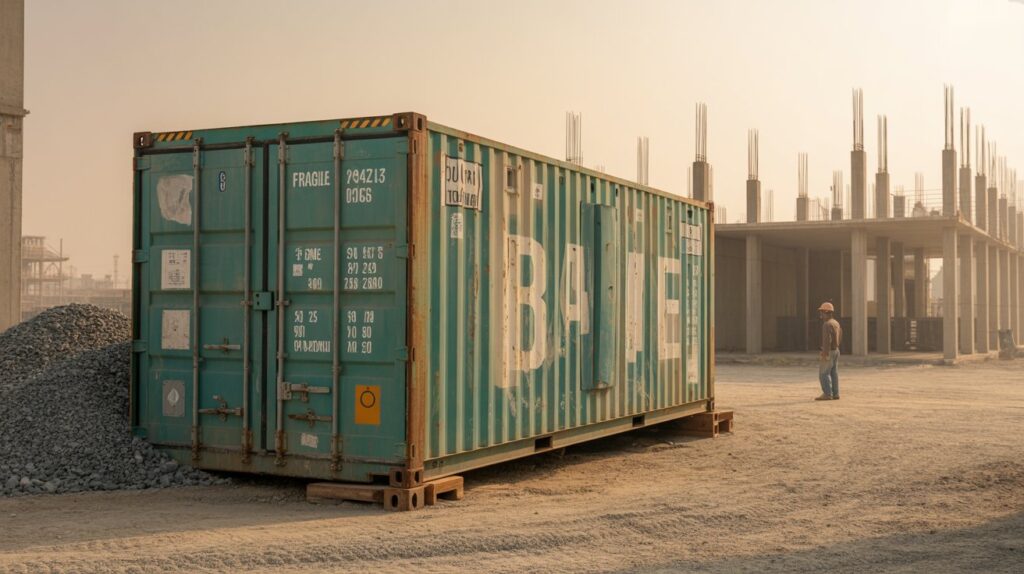Have you ever wondered how goods travel across the globe, arriving intact and in great condition at your doorstep? Shipping containers play a vital role in the logistics and transportation industry, making it possible to move everything from electronics to fresh produce across oceans and continents. Understanding the types of shipping containers is essential not just for businesses involved in international trade but also for anyone curious about how the logistics world operates.
Understanding Shipping Containers
Shipping containers are standardized cargo boxes used for transporting goods across various transportation modes, including ships, trains, and trucks. These durable structures are essential for protecting and efficiently moving goods worldwide. Let’s explore the different types of shipping containers that facilitate seamless global trade and logistics.
Dry Van Containers
Dry van containers are the most common type of shipping container, widely used for transporting a variety of goods. These are structurally designed to be watertight and equipped with doors at one end, making them perfect for transporting dry goods over long distances.
Key features:
- Sizes typically range from 20 feet to 40 feet in length.
- Suitable for non-perishable goods.
- Built to standard structural and security regulations.
Because of their strong, closed structure, dry van containers shield their contents from the environment, ensuring your products arrive as intended.
Refrigerated Containers (Reefers)
When you need to move temperature-sensitive goods, refrigerated containers, often called reefers, become indispensable. These specialized containers maintain a regulated temperature, crucial for transporting perishable items like food, pharmaceuticals, and flowers.
Key features:
- Equipped with a refrigeration unit.
- Maintains temperatures between -30°C and +30°C.
- Available in a variety of sizes, commonly 20 feet and 40 feet.
Reefers ensure that the quality and safety of perishable goods are preserved throughout their journey, from origin to destination.

Open Top Containers
Sometimes, cargo may be too large or oddly shaped to fit through traditional container doors. Enter open top containers, which provide a solution for such unconventional cargo.
Key features:
- Open roof design for loading from above.
- Removable tarpaulin cover to protect goods from the elements.
- Ideal for heavy machinery and oversized items.
These containers allow easy loading and unloading of bulky items, offering flexibility where standard containers fall short.
Flat Rack Containers
Flat rack containers are indispensable when dealing with items that are oversized and cannot fit into standard containers. Their distinctive feature is their collapsible sides that can be folded down, creating a flatbed-like structure.
Key features:
- Collapsible sides for easy loading of wide cargo.
- Suitable for vehicles, heavy equipment, and large industrial parts.
- Available in 20-foot and 40-foot lengths.
Flat rack containers are particularly useful in industries such as construction and engineering, where moving large and heavy equipment is a regular requirement.
Tank Containers
Liquids and gases pose unique transportation challenges, and this is where tank containers come into play. These cylindrical containers are specifically designed to carry hazardous and non-hazardous liquids, gases, and powders.
Key features:
- Made of stainless steel, ensuring resistance to corrosion.
- Appropriately insulated or heated according to cargo requirements.
- Comply with strict international transport regulations for handling hazardous materials.
Businesses involved in the chemical and beverage industries frequently rely on tank containers for the safe and efficient transportation of their products.
Ventilated Containers
For specific cargo types that require airflow, ventilated containers provide the solution. These containers ensure that humidity and moisture levels are managed to prevent spoilage during transport.
Key features:
- Equipped with ventilation openings for air circulation.
- Useful for items like coffee beans and other agricultural products.
- Available in standard sizes.
By allowing air to circulate naturally, these containers help prevent damage to goods that are sensitive to moisture.
Insulated Containers
When transportation conditions require temperature stability without active cooling or heating, insulated containers are the right choice. These containers use insulated walls to maintain the internal temperature, ensuring your goods aren’t subjected to temperature fluctuations.
Key features:
- Crafted with vacuum-sealed panels and insulation.
- Suitable for goods needing stable temperatures but no active refrigeration.
- Commonly used for foods or pharmaceuticals on shorter journeys.
By leveraging superior insulation properties, these containers ensure goods remain at optimal temperatures, preventing spoilage or damage.
Specialized High Cube Containers
High cube containers are an excellent choice when transporting voluminous, lightweight cargo. They offer extra height compared to standard containers, which allows more cargo to fit inside without exceeding weight limits.
Key features:
- Typically one foot taller than standard containers.
- Often used for bulky yet lightweight items.
- Available in sizes of 20 and 40 feet.
The additional vertical space in high cube containers can be a game-changer, especially for industries like furniture manufacturing and vehicle export.

The Importance of Choosing the Right Container
Selecting the appropriate shipping container is crucial for the smooth transport of goods. Choosing the wrong type can lead to increased costs, delays, and even damage to the cargo. Each container type is designed with unique specifications to meet the diverse needs of global shipping.
Criteria for Selecting Shipping Containers
When choosing a shipping container, consider several factors crucial in logistics planning. Here’s a simplified table to guide your decision-making:
| Criteria | Explanation |
|---|---|
| Type of Cargo | Evaluate if your cargo is dry, perishable, oversized, liquid, or requires special conditions. |
| Size and Volume | Ensure the container’s dimensions can accommodate your cargo adequately. |
| Transport Mode | Understand if your goods will be shipped, railed, or trucked. |
| Destination | Consider the specific regulations or requirements of the receiving port area. |
| Cost | Balance the cost against the benefits of using certain container types. |
Understanding these criteria helps ensure efficient and cost-effective transportation of goods across borders and between markets.
Impact of Shipping Containers on Global Trade
Shipping containers have revolutionized global trade by standardizing the transfer of goods. Before their advent, the loading and unloading of ships were labor-intensive and time-consuming. Shipping containers streamlined these processes, significantly reducing shipping time and operational costs. Containers have helped support the growth of international trade, making it more accessible, faster, and cost-effective for businesses worldwide.
Future Trends in Container Shipping
With technology progressing rapidly, future trends in container shipping are poised to make logistics even more efficient. Expect innovations like smart containers equipped with IoT devices, providing real-time tracking and condition monitoring. Additionally, advancements in sustainable materials and design, as well as automation technologies, are already reshaping the shipping landscape.
Conclusion
Understanding the different types of shipping containers helps highlight how integral they are in the global supply chain, ensuring that items move efficiently and safely from one corner of the world to another. Whether you’re involved in the import-export business or simply curious about logistics, knowing the specifics of each container type gives you a better appreciation of the worldwide trade mechanisms. And who knows? The next time you receive a package, perhaps you’ll consider the incredible journey it underwent before reaching your hands.

